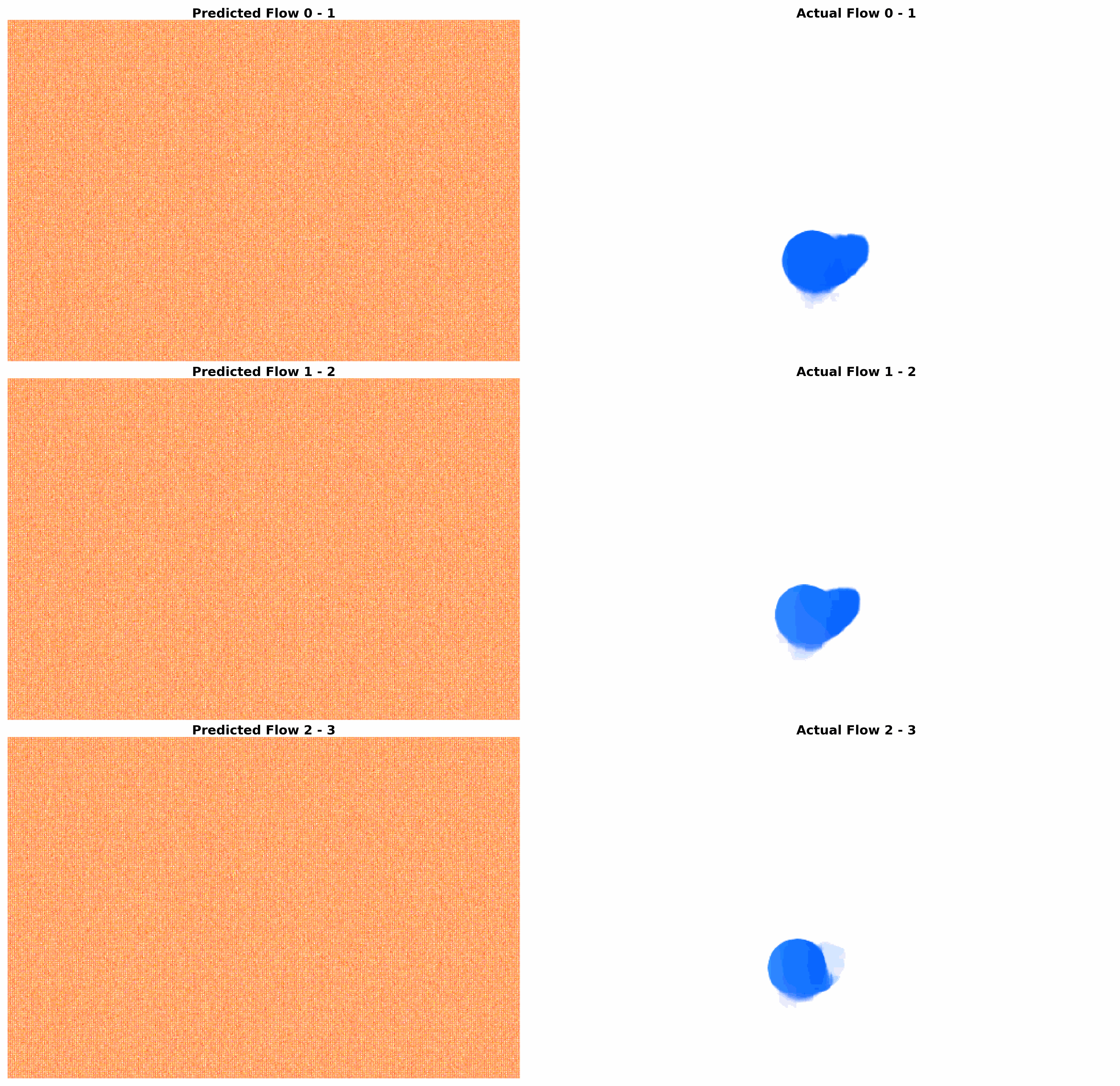Continual Learning
Note: The objective of this project is to develop a model that jointly predicts future video frames and motion (optical flow) in a sequential manner from the same hidden state, and answers user questions regarding the events observed during the video.
Currently, the models are cheating. They memorize the past frame(s) and optical flow(s) and show those as the prediction of the next video frame(s) and optical flow(s). I am working on to fix that issue.
Next Frame(s) Prediction

Optical Flow(s) Prediction

Data
The full dataset can be downloaded from here: http://clevrer.csail.mit.edu.
Training
The training process is summarized in the figures below.


Flow Reconstruction Image Reconstruction

Pipeline
After installing the libraries listed in requirements.txt, the training process can be started using the following code:
python train.py\
--num_predictions 3\
--embed_dim 512\
--hidden_size 512\
--stride 1\
--num_frames 127\
--resize_img 224\
--patch_size 32
num_predictionsspecifies the number of predictions made in each step. For example, if set to 4, the next 4 frames, optical flows, and states are predicted in the current step. The visualizations of the frame predictions and optical flow predictions are saved into theflowsandframesfolders for each video separately.embed_dimspecifies the embedding dimension for CLIP’s image encoder.hidden_sizespecifies the size of the hidden state for the LSTM cell.stridespecifies the intervals between predictions. For instance, if the stride is set to 4 and the number of predictions to 3, the 5th, 9th, and 13th frames and the optical flows between the 1st-5th frames, 5th-9th frames, and 9th-13th frames are predicted in the first step. In the next step, the 9th, 13th, and 17th frames and optical flows between the 5th-9th frames, 9th-13th frames, and 13th-17th frames are predicted, and so on.num_framesspecifies the number of frames used to train the model. Each video contains 128 frames.resize_imgspecifies the target dimensions of the figures before extracting features with CLIP’s image encoder.patch_sizespecifies the size of the patches used to process figures in CLIP’s image encoder.
These are all optional parameters, and the code can also run with the simpler command:
python train.py